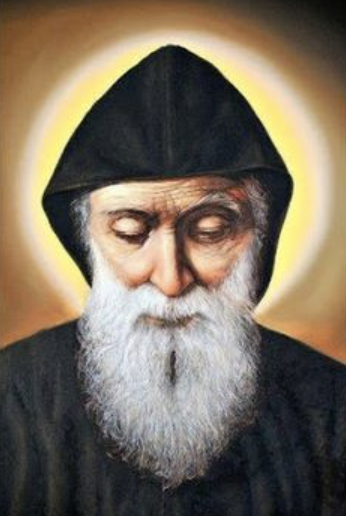
St Charbel Maklouf
Today is the feast of St Charbel Maklouf (1828-98), a Maronite monk and priest, who spent the last twenty-three years of his life living as a hermit. St Charbel lived a severely ascetic life involving prayer and fasting. As his reputation for holiness grew, increasing numbers of people came to him for counsel or for blessing. St Charbel was canonized in 1977. St Charbel Maklouf epitomises the Maronite tradition that traces itself to the beginnings of Christianity. St Charbel is a popular saint amongst the Maronites, but belongs to the spiritual patrimony of the whole Church. St Charbel is a saint for all times, all circumstances, all peoples. St Charbel is not just for the Maronites, but for all.
Maronites
To understand the Maronites, one has to understand the world some 2,000 years ago.
But first a word about the different rites within the Catholic Church. In the Church, there are Catholics of various rites – not only Maronite, but also Melkite, Alexandrian or Coptic, Armenian, Byzantine, Chaldean, and, of course, the Roman rite. The Church holds all lawfully recognised rites to be of equal right and dignity, and she wishes to preserve them in the future and to foster them in every way. The mystery of Christ is so unfathomably rich that it cannot be exhausted by its expression in any single liturgical tradition.
Syro-Phoenician Woman
Jesus of Nazareth was crucified in, perhaps, the year 30. The Maronites recall the encounter with the Syro-Phoenician woman (Matthew 15:21-28):
Leaving that place, Jesus withdrew to the region of Tyre and Sidon. A Canaanite woman from that vicinity came to him, crying out, “Lord, Son of David, have mercy on me! My daughter is demon-possessed and suffering terribly.”
Jesus did not answer a word. So his disciples came to him and urged him, “Send her away, for she keeps crying out after us.”
He answered, “I was sent only to the lost sheep of Israel.”
The woman came and knelt before him. “Lord, help me!” she said.
He replied, “It is not right to take the children’s bread and toss it to the dogs.”
“Yes it is, Lord,” she said. “Even the dogs eat the crumbs that fall from their master’s table.”
Then Jesus said to her, “Woman, you have great faith! Your request is granted. And her daughter was healed at that moment.
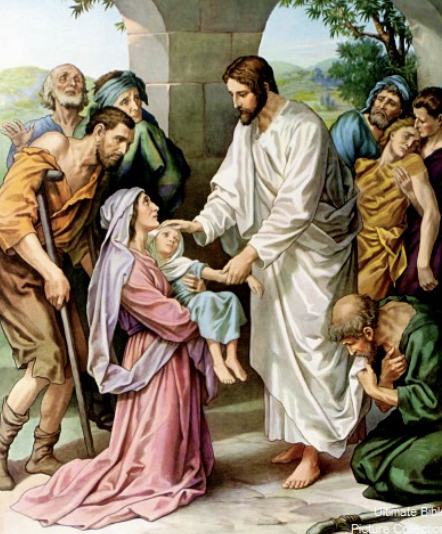
In 58 the Apostle Paul visited Tyre, a Phoenician city, and stayed with the Christians there (Acts 21:3-8). Syrian Antioch was where the term ‘Christian’ was first used (Acts 11:26). Thus Christianity, as it started to spread, took hold in Tyre which was inhabited by the Phoenicians, and in Syrian Antioch, north of Palestine, not far from modern Turkey.
Subsequent to the death of Jesus of Nazareth, Christianity spread throughout what was then the Roman Empire. Christianity spread rapidly in the cities of the Roman world, more slowly in the countryside.
Greek Language and Culture
The Romans conquered a world made up of many different peoples. Greek was the language of educated people and of commerce throughout the Roman Empire. Not insignificantly, the New Testament was largely written in Greek. The Church accepted the Septuagint, the Greek version of the Hebrew Bible. The Romans themselves were largely conquered by Greek language and culture. The conquerors became the conquered.
The Romans were the successors to the empire of the Greek Alexander the Great who, in 336 BC, commenced the conquest of much of the known world, bringing with him Greek language and culture.
Of course, local people continued to speak their own languages. Throughout much of what we call the Middle East Aramaic was the language of plain persons. Jesus of Nazareth spoke Aramaic – and it is a matter of speculation as to whether he was familiar with Hebrew, Greek and Latin. On the cross was a sign -“Jesus of Nazareth, the King of the Jews” – in Hebrew, Latin and Greek (John 19:20-22).
Phoenicians
This was a world in which the Phoenicians had a long and complex history. The Phoenicians were navigators and traders. They had trading posts around the Mediterranean, most notably at Carthage. The Phoenicians were the originators of what became the European alphabet. They had long been at odds with the Roman, -eventually fighting three wars with Rome which resulted in Roman supremacy around the Mediterranean.
The Phoenicians had a long and complicated relationship with the Jews. The Phoenicians provided cedar from Lebanon for the construction by the Jews of the first Temple completed by Solomon in 931, and for the second Temple completed by the returned exiles from Babylon in 515. The Phoenicians are referred to numerous times in the Hebrew Bible, what we call the Old Testament (Exodus 26:31; 28:4-8; 30: 23-25; 36: 35. 2 Samuel 5:11. 1 Kings 5:15-20, 31-32; 9:11-14, 27; 10: 2, 10, 18, 27-29; 16: 29-31; 22:39. 2 Chronicles 2:6; 3:14; 8:18; 9:9, 10, 21. Ezra 3:7. Isaiah 23:8. Jeremiah 10:9. Ezekiel 3:13; 27: 3,12, 26. Amos 3:15; 5:11; 6:4. Zechariah 9:3. Song of Songs 3:6.)
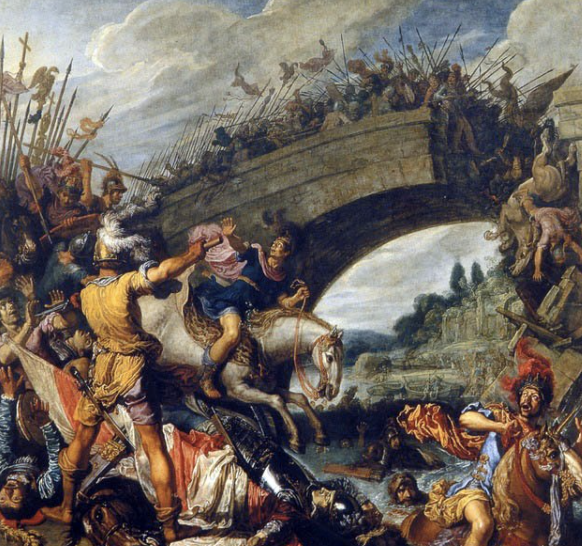
Constantine
In 312, when Constantine defeated Maxentius at the Battle of the Milvian Bridge, Constantine’s troops had inscribed “in hoc signo vinces” – in my name you shall conquer – referring to the cross of Christ. In 313 the Edict of Milan legalised Christianity throughout the Roman Empire. In 330 Constantinople was founded as the eastern capital of the Roman Empire. Ultimately, this led to the severing of the Roman Empire with what became the Byzantine Empire, the capital of which was Constantinople, the new Rome. Shortly before his death in 337 Constantine was baptised a Christian.
Antioch
The legalisation of Christianity brought to an end the age of martyrdom. Great centres of Christian life and learning developed, not only in Rome, but in Constantinople, Alexandria and Syrian Antioch. The Greeks had a substantial intellectual tradition which derived from Socrates, Plato and Aristotle – and Syrian Antioch was part of that Greek tradition. Antioch developed a famous theological school. The particular theological and liturgical “style” of the Maronites is Antiochene. The Maronites first developed in Syria, not Lebanon.
Monasticism
The age of martyrdom was succeeded by the development of monasticism. St Antony of Egypt (251-356) was a key figure in the monastic movement which spread throughout much of the Middle East and Europe. The Maronite tradition is very much monastic.
Council of Chalcedon
In the centuries following the legalisation of Christianity, there were a series of doctrinal disputes following which councils of the Church authoritatively resolved those disputes. In 451 the Council of Chalcedon declared that Jesus is one person with two natures, with both a human will, and a divine will. Jesus is a human person like us. This led to a schism in the Church, with the Monophysites arguing that Jesus had only one will. The Church in Antioch was divided between the followers of Chalcedon and the Monophysites. The Maronites adhered to the true Faith as proclaimed at Chalcedon, and by the Catholic Church. So, the Maronites see themselves as both Chalcedonian, and Petrine. The Maronites have always been in communion with Rome, even when war, remoteness and poor communications made contact difficult.
St Maroun
St Maroun, living a monastic life of austerity, worship, and seclusion in northern Syria, not far from Antioch, attracted disciples who were the foundation of the Maronite movement. The monastic life has always been the kernel of the way of the Maronites. In Australia, the Maronite Bishop , Bishop Antoine-Charbel Tarabay, is a monk as are the Maronite bishops generally. The monastery of St Charbel is at Punchbowl. Whilst St Maroun’s dates are not known with certainty, he died no later than 423. St Maroun adhered to the true Faith subsequently proclaimed at Chalcedon, and by the popes.
Many Phoenicians in Lebanon were converted by St Maroun’s follower, St Abraham, the Apostle of Lebanon.
Beit Maroun
In 453 the followers of St Maroun established a monastery, Beit Maroun, not far from the border with modern Lebanon. Beit Maroun became a source of evangelisation for much of the surrounding countryside, both in Syria and in Lebanon. In 517 a Monophysite army attacked Beit Maroun, killing 350 monks. Pope Hormisdas wrote to the monks who survived, describing those who died as members of the living body of Christ, and martyrs for the Faith.
First Maronite Patriarch
In 685 the monks elected the first Maronite Patriarch, St Yuhanna (John) Maroun. The new Patriarch provided a focus for those who stayed loyal to Chalcedon. The position of the followers of Chalcedon in Syria, as a result of Monophysite persecution, was increasingly difficult. St Yuhanna Maroun led the first Maronite immigration from Syria into Lebanon where the Maronites could practise their Faith unhindered. The Maronites in Lebanon merged over time with the local population.
Islam
Meanwhile, the prophet Mohammed (570-632) established Islam which eventually conquered the Middle East by force of arms. In 638 Syrian Antioch was conquered by Islamic invaders. The Islamic conquest of Syria accelerated the movement of monks, followers of St Maroun, adherents of the Antiochene Chalcedonian tradition, to Lebanon. Not far from the Mediterranean coast is Mount Lebanon, famous for its cedar trees. The people of Mount Lebanon were amongst those evangelised by the followers of St Maroun.
Kadisha Valley
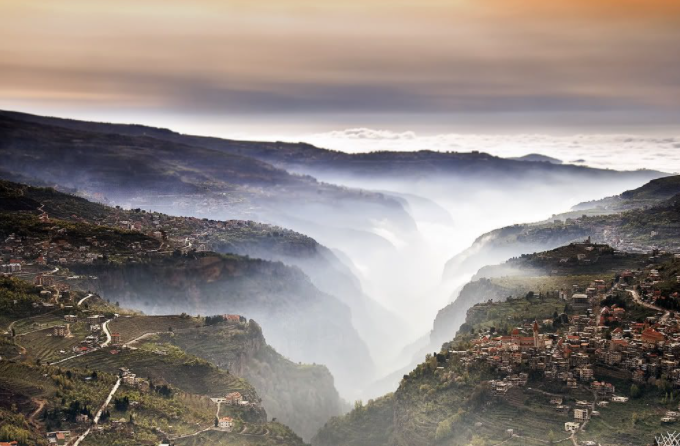
The villages of Mount Lebanon increasingly drew their vitality from the monasteries and associated hermitages established by the followers of St Maroun, in particular, in the Kadisha Valley, sometimes called the Holy Valley, remote from Byzantine and Islamic armies. The sides of the Valley are steep cliffs that contain many inaccessible caves, often at more than 1000m. Some caves were carved out of rock. Others were existing. The caves became cells, chapels, monasteries. The interiors of some caves are covered in frescoes and facades. Around the caves are terraces used by the monks for growing grain, grapes and olives. The Kadisha Valley is near the Forest of Cedars of God, survivors of the Cedars of Lebanon. The first printing press in the Middle East was established in the Kadisha Valley. UNESCO has designated the Kadisha Valley a world heritage site.
Destruction of Beit Maroun
In 936 the monastery of Beit Maroun in Syria was destroyed by a Muslim army, prompting the migration of the remainder of Maronites to Mount Lebanon. The Islamic conquest culminated in 1453 with the fall of Constantinople and the Byzantine Empire-replaced by the Ottoman Empire.
Three Key Events
So, three historical events shaped the development of the Maronite movement: the Council of Chalcedon, the development of monasticism, and the expansion of Islam and accompanying persecution of Christians.
Maronites Today
The full story of the Maronites in Lebanon is for another time. Suffice to say that, despite war and persecution, and despite poverty and isolation, the Maronites remained faithful to Chalcedon, faithful to monasticism, faithful to Rome. The Maronites have persevered in the Faith despite tremendous suffering.
Syriac Maronite Church of Antioch
The formal name of the Maronite Church is the Syriac Maronite Church of Antioch. The Maronite Patriarch, Cardinal Bechara Boutros al-Rafi, is today located at Bkerke in Lebanon. There is a large Maronite diaspora in Australia, in the United States, in Argentina and in Brazil. There are about three million Maronites worldwide. The position of Christians in the Middle East, in Lebanon, is increasingly difficult. The Maronite Faith is muscular, and vibrant-and the Maronites are known for their love of that Faith, for the love of family, for their hospitality, for their generosity, for their friendship-and, of course, for their entrepreneurship.
Living Icon of Christ
Nevertheless, the same challenges that confront many around the world confront the Maronite faithful. Pope St John Paul II in his Apostolic Exhortation A New Hope for Lebanon (1997) said:
“…a permissive lifestyle seems to progressively contaminate customs, particularly through the means of social communication and through people who, having long been far from their cultural references, have changed their moral and spiritual sense…it is important to insist on the recovery of the value of the patristic, liturgical and iconographic traditions of the Catholic Church in Lebanon, traditions that offer the Lebanese people spiritual paths to meet the living and true God, and to become the living icon of Christ.”
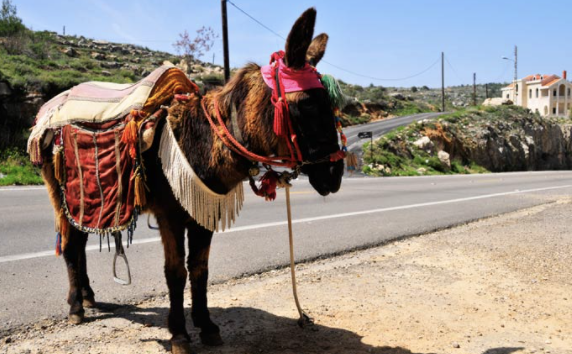
Villages
Part of the challenge of recovery and preservation of ancient traditions is to have sufficient persons versed in “dead” Syriac and Aramaic languages able to understand Maronite culture and theology at its sources.
Some have written beautifully of village life in Lebanon. That village life requires translation into contemporary society, both in Lebanon, and in the diaspora, so that the culture and Faith of St Maroun lives on.
Eremitical Vocation
The Divine Office today includes the following reading which sums up the eremitical vocation, so important to the Maronites:
‘For do not suppose that because the righteous were in the midst of men it was among men that they had achieved their righteousness. Rather, having first practised much quiet, they then received the power of God dwelling in them, and then God sent them into the midst of men, having acquired every virtue, so that they might act as God’s provisioners and cure them of their infirmities. For they were physicians of the soul, able to cure men’s infirmities. This was the need for which they were dragged away from their quiet and sent to men. But they are only sent when all their own diseases are healed. For a soul cannot be sent into the midst of men for their edification if it has some defect of its own. And those who go before they are made perfect, go at their own will and not of God’s. And God says in reproof about such, “I sent them not, but they ran of themselves.” (Jeremiah 23:21) This is because they are neither able to guard themselves, or edify another soul…
See, beloved, I have made known to you the power of quiet, and how it heals on all sides, and how God wills it. That is why I have written to you, that you may be strengthened in what you are doing, and know that it is in quiet that all the saints grew, and for this reason the divine power came to dwell in them, and made known to them heavenly mysteries.
Michael McAuley
